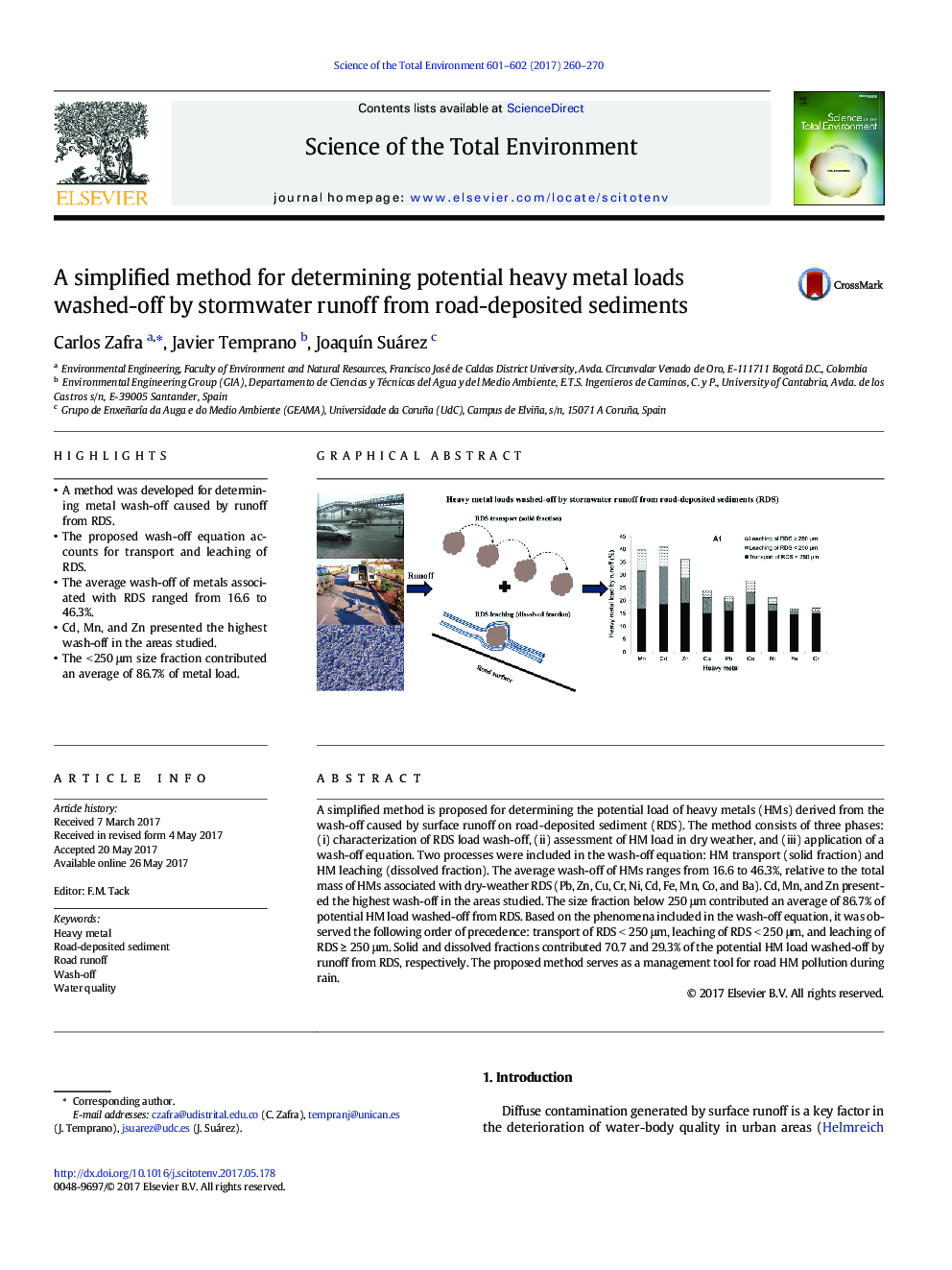| Article ID | Journal | Published Year | Pages | File Type |
|---|---|---|---|---|
| 5750384 | Science of The Total Environment | 2017 | 11 Pages |
â¢A method was developed for determining metal wash-off caused by runoff from RDS.â¢The proposed wash-off equation accounts for transport and leaching of RDS.â¢The average wash-off of metals associated with RDS ranged from 16.6 to 46.3%.â¢Cd, Mn, and Zn presented the highest wash-off in the areas studied.â¢The < 250 μm size fraction contributed an average of 86.7% of metal load.
A simplified method is proposed for determining the potential load of heavy metals (HMs) derived from the wash-off caused by surface runoff on road-deposited sediment (RDS). The method consists of three phases: (i) characterization of RDS load wash-off, (ii) assessment of HM load in dry weather, and (iii) application of a wash-off equation. Two processes were included in the wash-off equation: HM transport (solid fraction) and HM leaching (dissolved fraction). The average wash-off of HMs ranges from 16.6 to 46.3%, relative to the total mass of HMs associated with dry-weather RDS (Pb, Zn, Cu, Cr, Ni, Cd, Fe, Mn, Co, and Ba). Cd, Mn, and Zn presented the highest wash-off in the areas studied. The size fraction below 250 μm contributed an average of 86.7% of potential HM load washed-off from RDS. Based on the phenomena included in the wash-off equation, it was observed the following order of precedence: transport of RDS < 250 μm, leaching of RDS < 250 μm, and leaching of RDS â¥Â 250 μm. Solid and dissolved fractions contributed 70.7 and 29.3% of the potential HM load washed-off by runoff from RDS, respectively. The proposed method serves as a management tool for road HM pollution during rain.
Graphical abstractDownload high-res image (375KB)Download full-size image
